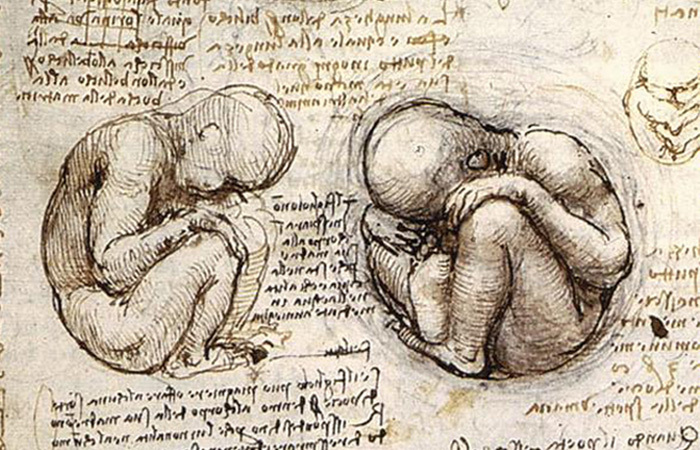Sex on the brain
18 August 2014
There are basic physical differences between women's and men's brains, starting in the womb and continuing into later life, says UCT's Professor of Neuropsychology Mark Solms. The question is to what extent these differences are prewired, and what role socialisation plays.
Your genes are a combination of your parents' genes, and are fixed from the moment of conception in every cell of your body. In the womb, babies' bodies are initially female, but boy foetuses have an XY chromosome and girls have an XX chromosome. The difference on the Y chromosome, very specifically, is due to a single gene sequence that, when activated, produces a molecule called TDF (testis-determining factor). This effectively turns the baby's gonads into testes.
Without the influence of TDF, gonads would become ovaries and the foetus would remain a girl. Solms says that this one gene sequence on the Y chromosome "is the only purely genetically determined difference between males and females - all that comes next flows from that tiny fact".
There is an environmental aspect to the story, however. The physiological process that happens in a cell will either switch on a gene sequence or not, and that determines what those genes do in the cell. "So it is difficult to separate the genetic from the environmental mechanisms that go towards making us who we are," Solms says. "The way in which genes work is simply inextricable from the environment that they find themselves in."
The gendered brain
Further changes happen at the beginning of the second trimester of pregnancy, when the testes produce vast quantities of testosterone. This hormone is converted by an enzyme called 5-alpha reductase produced by the mother and results in the body becoming male. As a result, the male foetus' body gets bigger, changes shape, grows male genitals and gets more hair. That said, the brain at this stage is still female. Solms explains that this is what happens on average, and not every process is the same: "Not every testicle produces the same amount of testosterone, and not every mum produces the same amount of the required enzymes."
In biology, everything happens to different degrees, and not everyone "is equally masculinised" as a result.
At the end of the second trimester, another wave of testosterone is released from the testes, causing the baby's brain to become "masculinised". The mother produces the enzyme aromatase, which converts the testosterone into oestrogen (female hormone). This oestrogen then crosses the blood-brain barrier and masculinises the brain.
 A visualisation of the brain by the SUMA software programme. (Image courtesy of the National Institute of Mental Health.)
A visualisation of the brain by the SUMA software programme. (Image courtesy of the National Institute of Mental Health.)
Brain and behaviour
The result of this "masculinisation" is that the brain gets bigger, although Solms is quick to add that "there is no evidence that brain size correlates with intelligence".
In boys, the corpus callosum, a beam of fibres that joins the right and left hemispheres of the brain, shrinks. This, on average, is what makes boys better at spatial understanding. In girls it is bigger, which means they talk earlier and become better linguistically than boys. Then there is the amygdala, linked to emotional memory formation and survival instincts - which tend to be more active in men. Solms says this means males are, on average, more active and aggressive than females. Women, however, have a more active cingulate gyrus (the front of the 'collar' surrounding the corpus callosum), which has been linked to nurturing activity, empathy and pro-social behaviour.
The multiplier effect
While genes predispose us to certain behaviours, Solms dispels any notions of a "reductionist genetic story". Small differences in aggression, for example, may occur whether a brain has been masculinised or not. However, increased aggression in a person will lead to a different response from the environment - causing the multiplier effect, where behaviour is reinforced and ultimately exaggerated. So while there may be a tiny genetically determined-difference, it will not be the same at the end of the maturation process, Solms explains.
Experiments with rats have shown evidence of this multiplier effect in action. The way mothers interact with their infants, and stress levels during pregnancy, had an "unquestionable" effect on the chemistry of the brain, resulting in massive consequences for the sexual life of the offspring.
Solms says while differences in the brain are biologically determined, it's impossible to understand how these work and what the effects are, on the average and in the individual, unless interactions with the environmental factors, which activate and transcribe the genetic mechanisms, are understood.
Turning to memory as an example, Solms says, "What we record in our long-term memory is our individual experience, which is socially or environmentally determined." However, the mechanism by which long-term memories are formed is through the activation of genes by those experiences: "Even the mechanism through which you remember your own, personal, beautiful, beloved, individual history; is held in your brain through the activation of your genes."
Story by Adele Baleta.
 This work is licensed under a Creative Commons Attribution-NoDerivatives 4.0 International License.
This work is licensed under a Creative Commons Attribution-NoDerivatives 4.0 International License.
Please view the republishing articles page for more information.
Feature
Faculty Focus - Science
News
Front page
Previous Editions










